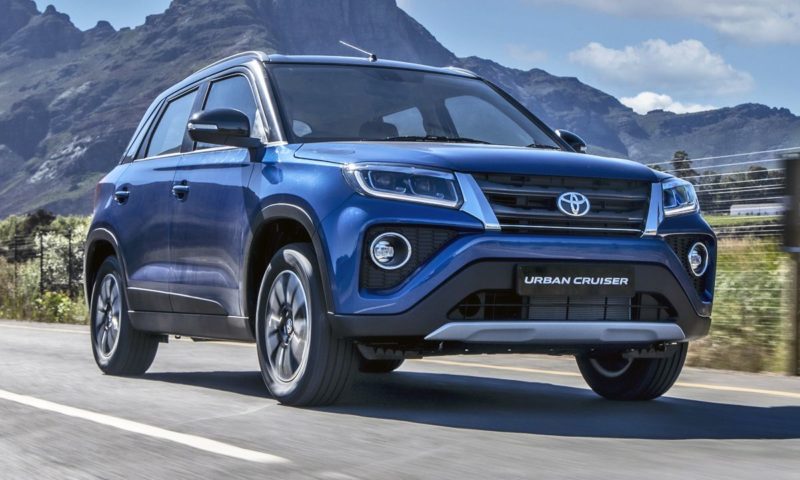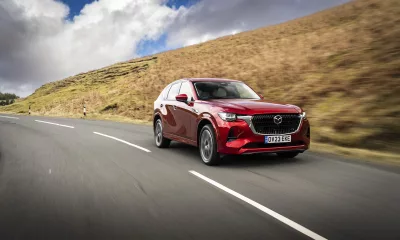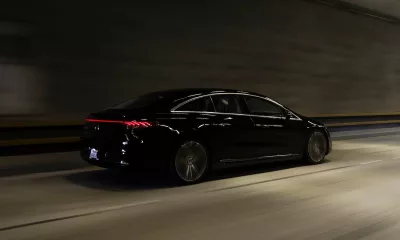
CAPE TOWN, Western Cape – Badge engineering. So far, this exercise has paid dividends for Toyota. Case in point: the Toyota Starlet. Since its local introduction in mid-September 2020, the local arm of the Japanese brand has sold bucketloads of the rebadged Suzuki Baleno. For reference, in its first full month of being on sale, 1 102 consumers put pen to paper for the Etios replacement (compared with the Baleno’s 51 units sold).
However, when asked by CARmag.co.za whether Starlet sales have caused frustration, Suzuki Auto South Africa responded the success of the Toyota-branded hatchback was “rather exciting” and added “if a longer-established brand in South Africa brings in your same product, it really talks to the quality and [confidence] they have in the product itself”.
Recently, Toyota South Africa Motors launched the Urban Cruiser which, similarly to the Starlet, is based on a Maruti Suzuki-built product. The product in question is the Vitara Brezza, which we’ve already sampled in top-spec, GLX trim (though with a manual gearbox). However, unlike the latter, the crossover driven here is equipped with Suzuki’s four-speed automatic transmission (also available with the Vitara Brezza) which, as is the case with the small SUV on which it’s based, is mated to the K15B engine.
Although mechanically identical, the Toyota Urban Cruiser sets itself apart from the Suzuki – bar the Toyota badging – with subtly restyled exterior items, the most notable of which is the grille. The latter item seems reminiscent of the Toyota Fortuner’s, albeit on a smaller scale. The front bumper and skid plate have also received some cosmetic revisions.
Specified in GLX trim, the Urban Cruiser can be had with the choice of one of three two-tone exterior paint options, which include the Burnt Orange body hue, replete with a white contrast roof; Cobalt Blue Metallic (seen here) and Coffee Brown, both with a black roof. Adding an SUV-like air to the Urban Cruiser’s exterior are silver roof rails and black plastic cladding for the wheel arches which, in this specification level, house 16-inch alloy wheels. LED projector headlamps (automatic in the GLX) are standard across the range. The LED foglamps seen here are, however, exclusively fitted to GLX derivatives.
Step inside – a fuss-free task thanks to the 198 mm of ground clearance and standard keyless entry – and you’ll notice the cabin is largely furnished in hard plastics. Perceived interior build quality is, however, solid. The seats are trimmed in cloth and are comfortable. Thanks to the height-adjustable driver’s pew (standard fitment in mid-spec Xs variants, too), it’s a cinch to dial in your preferred driving position. Seated behind the leather-wrapped multifunction steering wheel, the driver is afforded a commanding view of the road ahead. The analogue instruments are easily legible, though a digital speed readout would have been appreciated.
In addition to the (standard across the range) screen mirroring-enabled seven-inch touchscreen infotainment setup and rear park-distance sensors, the mid-spec Xs and flagship Xr gain automatic climate control and a reverse-view camera as standard. Xr specification further adds rain-sensing wipers, electro-chromatic rear-view mirror and cruise control to the package. Safety items include dual front airbags, ABS and Isofix child-seat anchorages for the 60:40-split rear bench.
As mentioned, we’ve previously sampled Maruti Suzuki’s five-speed manual ‘box in the Vitara Brezza, so it was a welcome opportunity to test the Indian-built product in automatic guise. Although the manual cog-swapper is arguably the one to have, the four-speed self-shifter does an admirable job shifting gears when cruising ‘round town.
Thanks to the low number of gears, the automatic doesn’t often go hunting for a different ratio and, as a result, feels smooth enough. However, as with the five-speed manual, an additional, higher ratio would have been appreciated when leaving urban setting for a long-distance cruise, as the shortage of a fifth might result in less-than-favourable fuel-consumption figure. However, match the claimed fuel figure of 6,2 L/100 km and the Urban Cruiser will be able to travel for 774 km before its 48-litre tank needs to be replenished.
Overtaking manoeuvres, meanwhile, require careful consideration. The steering is well weighted and the ride pliant, with the 60-profile rubber soaking up most road imperfections with aplomb. And thanks to its ride height, the Urban Cruiser fares well when traversing gravel roads, though it’s no off-roader.
The Urban Cruiser does a commendable job of playing the role of a lifestyle-orientated crossover. Like its Starlet stablemate, this exercise in badge engineering should once again pay significant dividends for Toyota. The Urban Cruiser is an honest, no-frills crossover which also benefits from a lengthy list of standard kit in Xr form and an extensive dealership network. However, Toyota’s service plan doesn’t quite match the four-year/60 000 km item offered by the Suzuki. Will that deter buyers? In a brand-loyal market like ours, the answer is likely a resounding “no”.
FAST FACTS
Model: Toyota Urban Cruiser 1,5 Xr AT
Price: R315 700
Engine: 1,5-litre, 4-cylinder, petrol
Transmission: 4-speed automatic
Power: 77 kW @ 6 000 r/min
Torque: 138 N.m @ 4 400 r/min
0-100 km/h: n/a
Top Speed: 165 km/h
Fuel Consumption: 6,2 L/100 km
CO2: 147 g/km
Service plan: 3 services/45 000 km




